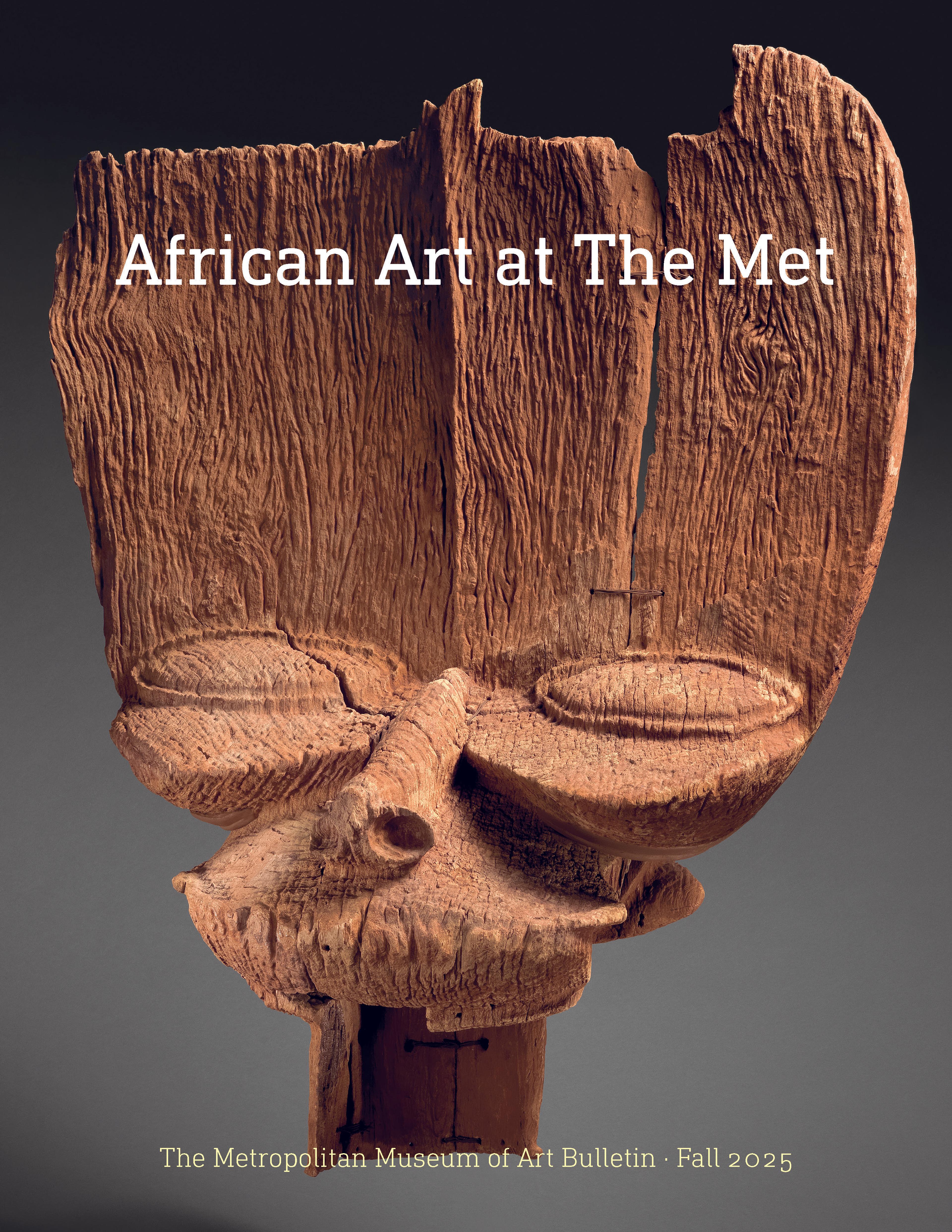Ncák (women's ceremonial skirt)
Epic ncák are worn spiraled around a woman’s lower body. The designs and techniques used to adorn the fabric varied greatly across the Kuba Kingdom. This masterpiece is composed of rectangular elements featuring abstract motifs cut and stitched to the surface of six mbala (unadorned textiles). The composition is enlivened by alternating naturally golden-hued panels with those dyed red or purple. Such intricate apparel would have been worn for only the most important ceremonial occasions. Notable among these were the investiture rites of regional chiefs, boys’ initiations, and the funerals of esteemed elders. In the latter context, the Kuba believe that the deceased must be dressed in woven raffia finery to enter the land of the dead and be identified as Kuba upon arrival.
Artwork Details
- Title:Ncák (women's ceremonial skirt)
- Artist:Kuba artist
- Date:early–mid-20th century
- Geography:Democratic Republic of the Congo, Kasai River region
- Culture:Kuba
- Medium:Raffia palm fiber, dye
- Dimensions:H. 26 x W. 167 in. (66 x 424.2 cm)
- Classification:Textiles-Woven
- Credit Line:Rogers Fund, 2004
- Object Number:2004.254
- Curatorial Department: The Michael C. Rockefeller Wing
More Artwork
Research Resources
The Met provides unparalleled resources for research and welcomes an international community of students and scholars. The Met's Open Access API is where creators and researchers can connect to the The Met collection. Open Access data and public domain images are available for unrestricted commercial and noncommercial use without permission or fee.
To request images under copyright and other restrictions, please use this Image Request form.
Feedback
We continue to research and examine historical and cultural context for objects in The Met collection. If you have comments or questions about this object record, please contact us using the form below. The Museum looks forward to receiving your comments.
